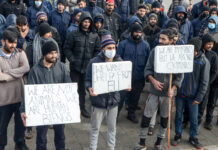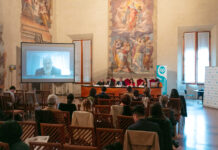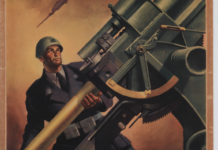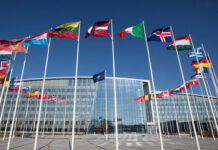Latest developements
The Lebanese economic and financial crisis is certainly in the top-ten most serious crises in the world since 1850. Quite possibly, it is among the top three. The World Bank, through its Lebanon Economic Monitor, came to this grim conclusion in its Spring 2021 report, a year and a half after the outbreak of an unparalleled economic and social catastrophe.
The country’s situation in June 2021 shows all the elements of a collapse. The Lebanese lira has been devalued by 90%, and it is practically impossible to possess hard currency – especially dollars. Per capita GDP has collapsed by more than 20% by 2020. The consequences for the population are very serious: half of them live below the poverty line, and all of them are burdened by electricity rationing, difficulties in finding fuel, skyrocketing food and basic necessities prices and almost daily increases. It is increasingly difficult to find medicines, even the most common ones. Those who are able to seek an expatriation visa leave Lebanon and join the already large group of expats. A century after the “great famine” that struck Mount Lebanon during the First World War and caused hundreds of thousands of victims, hunger and malnutrition are making a comeback in the country.
Even the Lebanese armed forces have had to resort to humanitarian aid, especially from France, which has sent food and medicine to the soldiers, whose salaries have collapsed due to hyperinflation. The value of payrolls, for the military as well as for all Lebanese, has decreased five or six times.
The power structure is the main culprit in this systemic rather than just economic and financial crisis. The so-called sectarian management of State institutions and political balances has become a tangled web, even in relation to international bodies, from the financial institutions that should help Lebanon emerge from the crisis to regional, European and international powers interested in their share of influence.
The rift within the political elite, formed on the balance between the civil warlords, and the Lebanese population, generated the moment of maximum conflict in 2019 – a few months before the outbreak of the Covid-19 pandemic. The spark that ignited strong street protests, the largest since 2005 after the assassination of Rafiq Hariri, was the tax on Whatsapp calls: an extra six dollars a month imposed on all telephone operators.
What is being fought for
Lebanon has been, and still is, one of Israel’s targets due to the presence of operational bases of the Palestinian resistance on its territory. The tension between the two countries has strengthened with the opposition between the Jewish state and the Shiite movement of Hezbollah, which has its bases in the Lebanese South. But another front has opened up over the years: after Syria and Iraq, the Land of the Cedars seemed to have become the third front in the new Islamic conquest led by the self-proclaimed Caliph al-Baghdadi. Between 2016 and 2017, jihadist groups attacked Northern Lebanon, while the Lebanese army launched a military offensive with the support of the United States to free the border with Syria from ISIS militants. If in July 2021 the two fronts on the borders seem to have calmed down, the internal one is on fire. The thawra, the people’s revolution, started on October 17, 2019, the day after the Lebanese government’s decision to establish the Whatsapp Tax. Despite the rapid turnaround by the executive led by Saad Hariri, the protest that arose against corruption, sectarian divisions of politics and inequalities immediately spread like wildfire, involving the main Lebanese cities. The outbreak of the pandemic and the explosion at the port of Beirut in August 2020 worsened an economic and social situation already on the verge of collapse.
Country Overview
With the dissolution of the Ottoman Empire, the League of Nations gave France control of Greater Syria, which included the five provinces that now form Lebanon. In 1920 France declared the state of Greater Lebanon independent, a composite state, with an enclave in Syria with a Maronite Christian majority and a Muslim and Druze majority with Beirut as its capital. In 1943 the Lebanese government abolished the French mandate by declaring its independence. In 1948, Lebanon joined the Arab League’s war against Israel, without ever invading the newborn state. After the Arab defeat, Israel and Lebanon entered into an armistice, but a peace treaty still does not exist today. Consequence of this war were 100,000 Palestinian refugees, who were joined by others after the Arab-Israeli conflict of 1967. Refugees who will later be, according to Israel, the cause of the invasion of Lebanon. The military operation “Peace in Galilee” started on June 6, 1982 to eradicate the Palestinian armed presence from southern Lebanon. The first Israeli-Lebanese war extended to Beirut, where the Palestine Liberation Organization (PLO) was based. To stop the bloodshed, international diplomacy intervened, evicting the leadership of the PLO (which had taken refuge in Tunis) and poured many Palestinian armed units into neighbouring countries. This would lead to the dramatic massacre in the Sabra and Shatila refugee camps led by Christian units led by Elie Hobeika and left to act by Israeli troops, commanded by Ariel Sharon, stationed in the affected area. In the following years, Lebanon faced various problems of internal balance, with Hezbollah, Shiite Muslims, close to Damascus and Tehran.
On July 12, 2006, Hezbollah militiamen attacked an Israeli army patrol in southern Lebanon. Israel reacted with force, launching an offensive to “neutralize the military apparatus of Hezbollah”. Hezbollah’s resistance proved effective, and counterattacked Israeli territory with the launch of thousands of missiles. On 11 August the United Nations Security Council intervened with Resolution 1701, which called for the immediate cessation of hostilities, the withdrawal of Israel from southern Lebanon and the interposition of Lebanese regular troops and the United Nations Interim Force in Lebanon (UNIFIL) in a buffer zone free from any armed personnel other than those of the United Nations and the Lebanese regular armed forces. Even today, the Italian Blue Helmets in the UNIFIL mission continue to ensure control of the Blue Line, which represents that “practical” line of demarcation, about 51 kilometers long, which separates Lebanon from Israel. Complicating the situation in Lebanon, already tense due to the economic, political and social crisis, are the geopolitical developments taking place around the country, in the states that are competing for influence over Beirut. Bashar al Assad’s consolidation of power in Syria and the election of a conservative president like Ebrahim Raisi in Iran are strong support for the Shiite Hezbollah party. The heir to the Saudi Arabian throne Mohammed bin Salman continues to exert pressure on the Sunni political leadership, with an even more evident presence than in previous decades. The former colonial power, Emmanuel Macron’s France, keeps exercising its pressure on Lebanon but does not question the national political elite and its faults. For twenty years caught along the lines of the region’s conflicts, from Iraq to Syria, Lebanon is also paying the consequences of the humanitarian emergency and the burden of refugees, impossible to bear for a country of a few million citizens. Official figures are impressive: 855,000 Syrian refugees registered by UNHCR and 470,000 Palestinians supported by UNRWA. However, analysts consider them to be strongly conservative, and accuse them of hiding more severe numbers. For the Lebanese population, the presence of refugees has meant, for example, a heavy rise in rents and competition on the labor market. To complicate the picture, the pandemic hit a country at its extreme and without a health facility capable of dealing with the situation. The management of the pandemic was hindered by the endemic inability of Lebanese politics to get out of the sectarian logic and the division of power born after the civil war, which lasted fifteen years and concluded in 1990 with a regional agreement.
Key figure or organization – The Egg
This building has become the symbol of the thawra, the Lebanese revolution of 2019. Not a symbol of the faiths present in Beirut, but a reinforced concrete symbol that bears the signs of war, a sort of monument to memory, the ghost of a city that over the 1960s had been the core of an experimental culture, even from an architectural point of view. Known as the Egg, the construction was signed by architect Joseph Philippe Karam, a cinema that today looks like a huge bunker. And such it was, overwhelmed by the civil war that began in 1975. The Egg was right on the Green Line. It withstood the war and also the Solidere reconstruction, which wiped out a part of downtown Beirut to give birth to a different city. In the fall of 2019, protesters transformed the Egg into a venue for meetings and performances, the heart of the creative and artistic Beirut that was a constituent part of the uprising.
Focus 1 – The explosion of August 4th, 2020
It is August 4th, 2020, shortly after six in the afternoon. An explosion of
proportions rips through the air of Beirut. The toll is devastating: 217 dead, more than seven thousand wounded, at least 300 thousand people without a home, 77 thousand flats damaged. The symbol of the explosion, in a country already already struck by hunger, is the silo that contained the Lebanese people’s grain being completely destroyed. The World Bank quantifies the damage at approximately 4 billion dollars. The silo was in the harbor area where the explosion occurred, originating from warehouse number 12. To generate it were 2,750 tons of ammonium nitrate, a chemical bomb that had been stored in the hangar for almost six years. The ammonium nitrate came from the cargo ship Rhosus, flying Moldovan flag and en route to Mozambique, detained in the port of Beirut for debts, then deemed unsuitable for navigation, forced to disembark the dangerous cargo and finally sunk in the waters in front. Internal Lebanese investigations have not reached international standards, according to the complaint of 53 organizations for the defense of rights. On the dock, once again, the negligence of a corrupt political and bureaucratic system.
Focus 2 – Gas issues
Israel and Lebanon are enemies and divided not only along the land border, over which the territorial dispute has never ended. And they are not alone on a constant war footing, held back by the continued presence of the UN UNIFIL peacekeeping contingent stationed in southern Lebanon. The tensions between the two countries also concern the maritime border, due to the discovery of two large natural gas fields (Leviathan and Tamar) by Israel. The Tel Aviv government claims they are in the waters facing Israel. Lebanon disagrees and the case has become the subject of negotiations which, for now, have not achieved any results or agreements, despite US mediation.


















